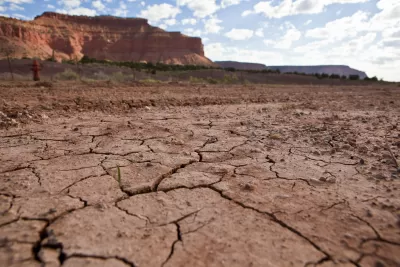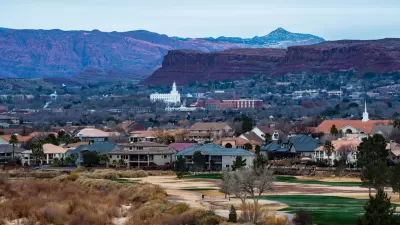As climate change heightens the risk of intense drought periods, a new framework can help scientists better understand the interconnected causes and effects of drought.

Although droughts "are more complex than mere shortages of precipitation or surface water," scientists have had few terms for describing and defining different droughts and their causes, writes Elizabeth Thompson for Eos.
"To address this deficiency, AghaKouchak et al. propose the idea of anthropogenic drought, which accounts for both natural variation and human actions. For instance, droughts are affected by local decisions about water and land use as well as by such global conditions as greenhouse gas levels and climate change. The authors suggest that scientists think of drought as a process with contributing factors, effects, and feedbacks rather than as simply a final product."
The proposed framework, says Thompson takes into account the "far-reaching and often unexpected effects, including damage to local ecosystems, social unrest, and economic loss" of droughts. "The researchers say that human activities and decisions as well as related feedbacks should be integrated into new models that include both water and energy balances to achieve reliable modeling of drought as a process. By understanding how droughts develop as processes, scientists will be able to more accurately predict droughts, they suggest, allowing decision-makers to respond appropriately and sustainably."
FULL STORY: A Better Way to Understand Drought

Planetizen Federal Action Tracker
A weekly monitor of how Trump’s orders and actions are impacting planners and planning in America.

Congressman Proposes Bill to Rename DC Metro “Trump Train”
The Make Autorail Great Again Act would withhold federal funding to the system until the Washington Metropolitan Area Transit Authority (WMATA), rebrands as the Washington Metropolitan Authority for Greater Access (WMAGA).

The Simple Legislative Tool Transforming Vacant Downtowns
In California, Michigan and Georgia, an easy win is bringing dollars — and delight — back to city centers.

The States Losing Rural Delivery Rooms at an Alarming Pace
In some states, as few as 9% of rural hospitals still deliver babies. As a result, rising pre-term births, no adequate pre-term care and harrowing close calls are a growing reality.

The Small South Asian Republic Going all in on EVs
Thanks to one simple policy change less than five years ago, 65% of new cars in this Himalayan country are now electric.

DC Backpedals on Bike Lane Protection, Swaps Barriers for Paint
Citing aesthetic concerns, the city is removing the concrete barriers and flexposts that once separated Arizona Avenue cyclists from motor vehicles.
Urban Design for Planners 1: Software Tools
This six-course series explores essential urban design concepts using open source software and equips planners with the tools they need to participate fully in the urban design process.
Planning for Universal Design
Learn the tools for implementing Universal Design in planning regulations.
Smith Gee Studio
City of Charlotte
City of Camden Redevelopment Agency
City of Astoria
Transportation Research & Education Center (TREC) at Portland State University
US High Speed Rail Association
City of Camden Redevelopment Agency
Municipality of Princeton (NJ)





























